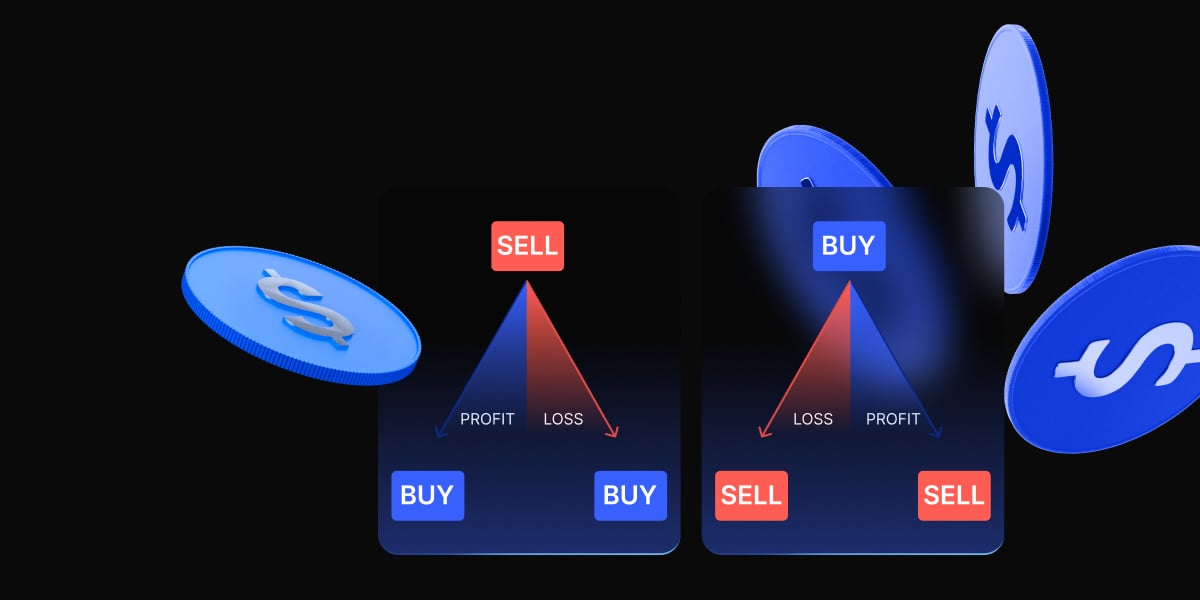Amazon.com Inc. (AMZN) is one of the most influential companies in the global economy, dominating e-commerce and cloud computing through Amazon Web Services (AWS). With a history of rapid growth, Amazon stock remains a popular choice among investors and traders.
This guide will explain how to invest in Amazon, buy AMZN stock, and trade it efficiently using different strategies.
Whether you are a beginner or an experienced investor, understanding Amazon’s stock price movements and market position can help you make better financial decisions.
Why invest in Amazon stock?
Investing in Amazon stock is an attractive option due to its strong financial performance, market dominance in e-commerce, cloud computing, and digital advertising.
The company’s leadership in these sectors provides long-term growth potential, making Amazon stock a valuable addition to any portfolio.
Seek advice from financial experts
Before buying AMZN stock, investors should assess the company’s revenue growth, competitive position, and broader economic factors influencing the stock market. Ask professional advisors for assistance before making any investment decisions.
With its continued expansion and innovation, Amazon remains a top choice for those looking to capitalize on the growth of the e-commerce and technology sectors.
What is Amazon.com Inc. and why is it a market leader?
Founded by Jeff Bezos in 1994, Amazon has grown into a global powerhouse in e-commerce, cloud computing, and digital advertising. The company’s consistent revenue growth and market expansion have positioned it as a leader in multiple industries.
Amazon Web Services (AWS) is a major revenue driver, contributing significantly to Amazon’s earnings. Additionally, Amazon’s vast marketplace is powered by millions of third party sellers, who play a crucial role in the company’s retail ecosystem by offering a wide range of products and competitive pricing. The company’s innovations in logistics, AI, and customer service further enhance its competitive edge.
Amazon stock price history and key milestones
AMZN stock has experienced significant price fluctuations throughout its history, largely driven by earnings reports, technological advancements, and broader stock market trends.
Since its IPO in 1997, Amazon has become a major player in e-commerce, with its stock price rising steadily as the company expanded into new sectors.
Notably, Amazon’s foray into cloud computing with Amazon Web Services (AWS) contributed significantly to its stock value, cementing its position as a leader in both e-commerce and technology.
Amazon share price timeline
- Amazon IPO in 1997 – The company’s initial public offering marked the beginning of Amazon’s journey as a dominant e-commerce platform.
- Expansion into Amazon Web Services (AWS) – AWS, Amazon’s cloud computing division, became a major revenue driver and positively impacted Amazon stock price.
- Acquisition of Whole Foods in 2017 – Amazon’s strategic acquisition helped diversify its business and strengthened its position in retail, affecting its stock performance.
- Surge in e-commerce demand during COVID-19 – The pandemic led to a significant rise in Amazon’s stock price, fueled by increased demand for online shopping and home delivery services.
What affects the price of Amazon shares?
Several factors impact Amazon’s stock price:
- Earnings reports: Revenue growth, profit margins, and AWS performance shape investor sentiment.
- Competition: Rivals like Walmart and Microsoft affect Amazon’s market share.
- Macroeconomic factors: Inflation, interest rates, and global economic conditions impact stock market trends.
- Consumer demand: Changes in shopping behavior influence Amazon’s business operations and revenue streams.
- Regulatory changes: Government policies on antitrust and taxation can affect Amazon’s stock performance.
How to buy Amazon stock
Investing in Amazon can be approached in multiple ways, such as purchasing individual shares, investing in ETFs, or exploring alternative options like CFDs and stock derivatives. Each method offers varying levels of risk and reward, making it essential to assess your investment strategy before committing capital.
Understanding the difference between investing and trading is essential before making a financial commitment. Investors can opt to buy as little as a single share, however, few do so.
Using a trading broker is a solid option for many. PrimeXBT is a trusted broker that offers users a free account and some of the most advanced trading tools currently available.
Ways to invest in Amazon (AMZN) stocks
- Buy Amazon stock through a brokerage account with a market order or limit order.
- Invest in ETFs that include Amazon shares for portfolio diversification.
- Trade CFDs to take advantage of price movements without owning Amazon shares.
- Options trading allows speculation on AMZN stock price movements.
- Fractional shares investing enables buying individual stocks at lower costs.
Understanding stock trading vs. investing
Investing in Amazon stock focuses on long-term growth and wealth accumulation. Investors typically buy and hold Amazon shares for extended periods, relying on the company’s continuous expansion and financial performance to generate returns. This approach is ideal for those who prefer a more passive strategy and are willing to withstand market fluctuations for the potential of steady appreciation over time. One commonly used strategy for long-term investors is dollar cost averaging, which involves consistently purchasing shares over time to reduce the impact of market volatility and lower the average cost per share.
On the other hand, trading Amazon CFDs or options is centered on short-term price movements, offering opportunities to benefit from market volatility. Traders analyze stock price trends, economic indicators, and technical signals to identify entry and exit points. By leveraging short-term market fluctuations, they can execute frequent trades and adjust strategies quickly to adapt to changing conditions. However, this method requires active monitoring and a solid understanding of market dynamics to navigate risks effectively.
How to trade Amazon stock with CFDs
Trading Amazon CFDs allows traders to speculate on share price movements without purchasing the underlying asset. CFDs provide leverage, enabling greater market exposure with a smaller initial investment. However, leverage also increases risk, making risk management crucial.
Short selling Amazon stocks – how to profit from price drops
Short-selling AMZN stock involves borrowing shares, selling them at the current price, and repurchasing them later at a lower specific price.
This strategy benefits from declining stock prices but carries significant risks. Proper risk management strategies, such as stop-loss orders, are essential when shorting AMZN stock.
Why trade Amazon CFDs with a trading platform
Trading Amazon CFDs provides traders with increased market exposure through leverage, allowing them to take larger positions with a smaller initial investment. This enables greater flexibility when engaging with Amazon’s stock price movements, particularly in volatile market conditions. However, leverage also magnifies risk, making risk management an essential consideration when trading CFDs.
Using a user-friendly trading platform with advanced tools can enhance the trading experience, providing features such as real-time market data, charting capabilities, and risk management tools. These features help traders make informed decisions while executing trades efficiently.
Another advantage of trading Amazon CFDs is the ability to short sell Amazon stock, which allows traders to potentially benefit from downward price movements. This strategy can be useful in uncertain market conditions where stock prices fluctuate frequently. Additionally, competitive fees and fast order execution ensure that traders can react quickly to market changes, optimizing their trading strategies effectively.
Analyzing Amazon stocks before trading or investing
Proper analysis helps traders and investors determine whether Amazon is a good stock to buy or sell. Seek consultations from professional financial analysts or experienced brokers before buying Amazon stock.
The best option is to run a multi-layered analysis. First, a fundamental analysis of the stock, followed by a technical one. Here are the basic features of each type of analysis:
Fundamental analysis of Amazon stock
- Evaluate earnings reports, revenue growth, and P/E ratio.
- Assess Amazon Web Services (AWS) performance.
- Analyze competition in the e-commerce industry.
- Review macroeconomic factors affecting the stock market.
Technical analysis for trading Amazon stocks
- Read stock price charts and identify trends.
- Use indicators like Moving Averages, RSI, and MACD.
- Determine key support and resistance levels.
- Identify breakout patterns for trading opportunities.
Amazon stocks trading hours and best times to trade Amazon
Amazon stock trades on the NASDAQ during standard market hours. The best trading times are during periods of high liquidity, such as market open and close, and around earnings announcement dates.
Risk management in Amazon stock trading
Risk management is crucial when trading AMZN stock to avoid significant losses. Keep in mind that it is always wise to work with a certified public accountant or a licensed professional in the field of financial advice. Also, keep track of other investments that are active.
How to manage risks when trading AMZN
- Use stop-loss and take-profit orders to control risk.
- Adjust position sizing to align with risk tolerance.
- Monitor financial news and economic trends affecting Amazon’s stock price.
- Diversify investments to minimize exposure to a single stock.
Common mistakes traders and investors make
Traders and investors alike can make mistakes while navigating the markets. This is why it is crucial to carefully examine every move. Some of the most common mistakes made by traders and investors are:
- Emotional trading leading to impulsive decisions.
- Overleveraging positions, increasing financial risk.
- Ignoring market research and macroeconomic factors.
- Lack of an exit strategy, missing profit opportunities.
Conclusion
Amazon remains a dominant force in e-commerce, cloud computing, and advertising. Whether you buy Amazon stock for long-term investment or trade CFDs for short-term gains, understanding market trends, stock analysis, and risk management is essential for success.
Can I buy Amazon stock directly?
You can buy Amazon stock through a brokerage account using a market order or limit order.
How much does it cost to buy Amazon stock?
Amazon's stock price fluctuates, and you can purchase fractional shares to start investing with a lower amount.
Is investing in Amazon a good idea?
Amazon has a strong market position and revenue growth, making it a potential long-term investment. Always asses the moment you are considering to invest, and avoid making impulsive decisions.
How to buy Amazon stock (AMZN)?
You can buy Amazon stock through brokers by placing a market or limit order. PrimeXBT is a renowned broker offering innovative tools and flexible options for trading, and registration is free of charge.
How much should I invest in Amazon stock?
Investment decisions depend on your financial goals, risk tolerance, and market research. Always consider consulting with licensed financial professionals before investing.
The content provided here is for informational purposes only. It is not intended as personal investment advice and does not constitute a solicitation or invitation to engage in any financial transactions, investments, or related activities. Past performance is not a reliable indicator of future results.
The financial products offered by the Company are complex and come with a high risk of losing money rapidly due to leverage. These products may not be suitable for all investors. Before engaging, you should consider whether you understand how these leveraged products work and whether you can afford the high risk of losing your money.
The Company does not accept clients from the Restricted Jurisdictions as indicated in our website/ T&C. Some services or products may not be available in your jurisdiction.
The applicable legal entity and its respective products and services depend on the client’s country of residence and the entity with which the client has established a contractual relationship during registration.




